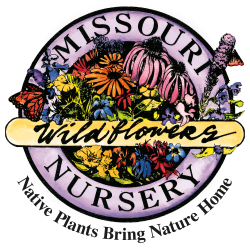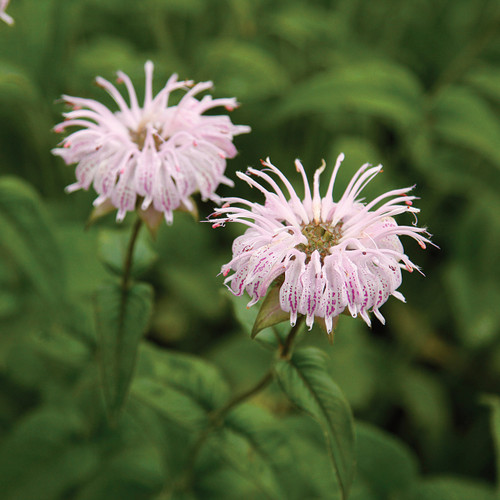Wild bergamot is a great choice for attracting pollinators; bees, butterflies, and hummingbirds swarm the flowers along with many other insects on the search for nectar. It is closely related to beebalm, which is shorter, blooms earlier, and grows in more shade.
Deer tend to avoid this minty plant. It has a history of medicinal use and a tea can be made from the leaves. The flowers are showy in floral arrangements, both fresh cut or dried. Wild bergamot tolerates drought fairly well, though some of the lower leaves may turn yellow and fall off.
Uses: Pollinators, cut flowers, edible, medicinal, deer tolerant, drought
We are now growing two variants. There is a short variety found in southwest Missouri that blooms a little earlier and has fewer flower heads per stem. The typical variety is taller and blooms a little later.
Bloom time (typical): June & July
Bloom time (short variant): late May & June
Height (typical): 36 to 48 inches
Height (short variant): 18 to 30 inches
Space: 16 to 24 inches
Sun: Full sun to light shade
Moisture: Average
Seed:
-
78,000 seeds per ounce
-
1 ounce per 2500 square feet







